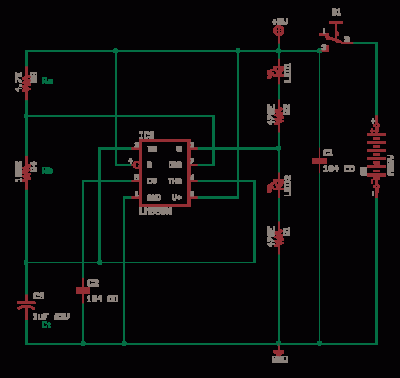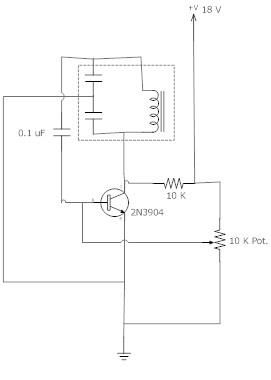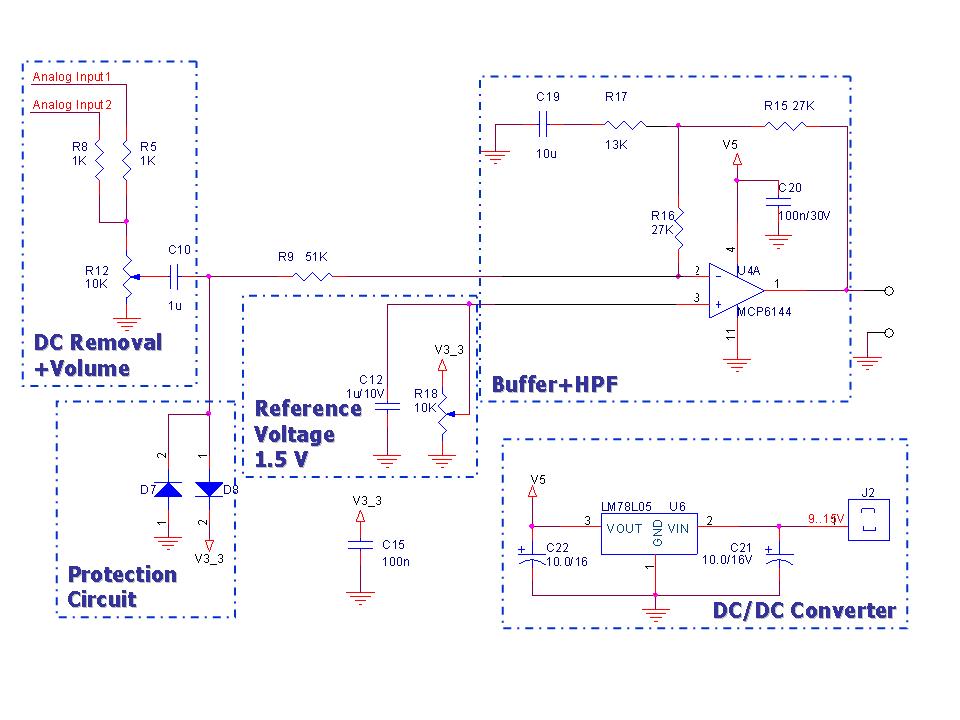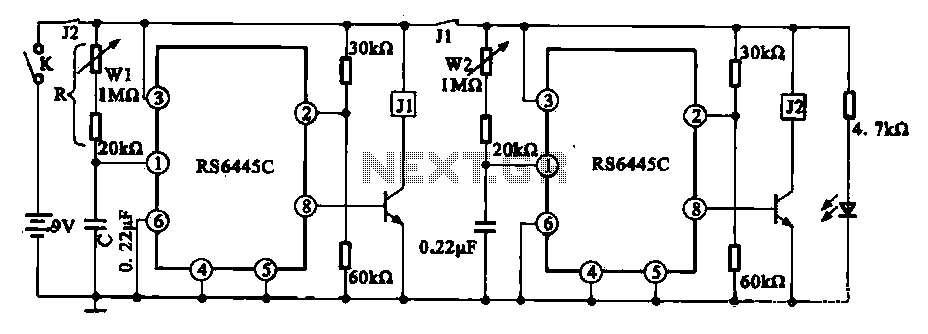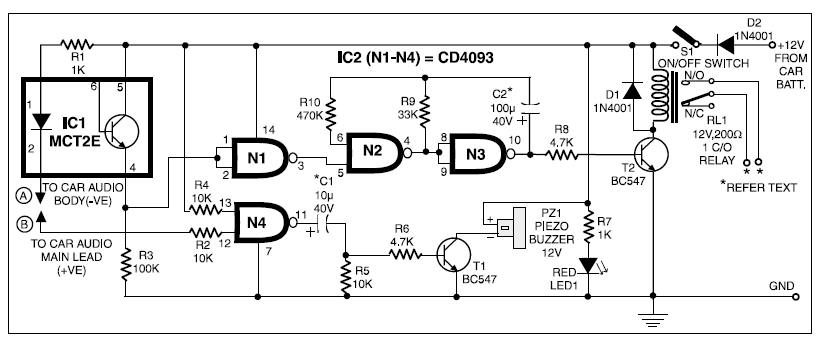
Audio Subcarrier Oscillator

A single integrated circuit (IC) provides all amplifiers: the 74HC04 Hex Inverter, which is a digital component. The second oscillator synchronizes to three times the frequency of the first oscillator, thereby tripling the frequency modulation (FM) deviation. Utilizing the lower frequency f1 oscillator also improves frequency stability.
The circuit employs the 74HC04 Hex Inverter to create a compact and efficient amplification stage for digital signals. This IC contains six independent inverters, which can be configured to perform various logic functions. In this application, the inverters are utilized to amplify and shape the output signals from the oscillators.
The first oscillator operates at a fundamental frequency, denoted as f1, which serves as the base frequency for the system. The second oscillator, synchronized to three times this frequency (3f1), generates a higher frequency signal that is essential for achieving greater frequency modulation deviation. This synchronization ensures that the output of the second oscillator is consistently aligned with the first, allowing for precise control over the modulation characteristics.
The tripling of the FM deviation is a critical aspect of the design, as it enhances the system's ability to transmit information over a wider bandwidth. This is particularly beneficial in applications where signal clarity and range are paramount. By utilizing the lower frequency f1 oscillator, the design also benefits from improved frequency stability, which minimizes drift and enhances overall performance.
In summary, the circuit effectively combines the capabilities of the 74HC04 Hex Inverter with dual oscillator configurations to achieve a robust and stable frequency modulation system. The careful selection of oscillator frequencies and the use of a single IC for amplification contribute to a streamlined design that is both efficient and effective for various digital communication applications.A single IC provides all amplifiers: 74HC04 Hex Inverter ( a digital element). The 2nd oscillator synchronizes to 3 times the 1st oscillator and thereforethe FM deviation is tripled. Using the lower freq f1 oscillator also enhancesfrequency stability. 🔗 External reference
The circuit employs the 74HC04 Hex Inverter to create a compact and efficient amplification stage for digital signals. This IC contains six independent inverters, which can be configured to perform various logic functions. In this application, the inverters are utilized to amplify and shape the output signals from the oscillators.
The first oscillator operates at a fundamental frequency, denoted as f1, which serves as the base frequency for the system. The second oscillator, synchronized to three times this frequency (3f1), generates a higher frequency signal that is essential for achieving greater frequency modulation deviation. This synchronization ensures that the output of the second oscillator is consistently aligned with the first, allowing for precise control over the modulation characteristics.
The tripling of the FM deviation is a critical aspect of the design, as it enhances the system's ability to transmit information over a wider bandwidth. This is particularly beneficial in applications where signal clarity and range are paramount. By utilizing the lower frequency f1 oscillator, the design also benefits from improved frequency stability, which minimizes drift and enhances overall performance.
In summary, the circuit effectively combines the capabilities of the 74HC04 Hex Inverter with dual oscillator configurations to achieve a robust and stable frequency modulation system. The careful selection of oscillator frequencies and the use of a single IC for amplification contribute to a streamlined design that is both efficient and effective for various digital communication applications.A single IC provides all amplifiers: 74HC04 Hex Inverter ( a digital element). The 2nd oscillator synchronizes to 3 times the 1st oscillator and thereforethe FM deviation is tripled. Using the lower freq f1 oscillator also enhancesfrequency stability. 🔗 External reference

